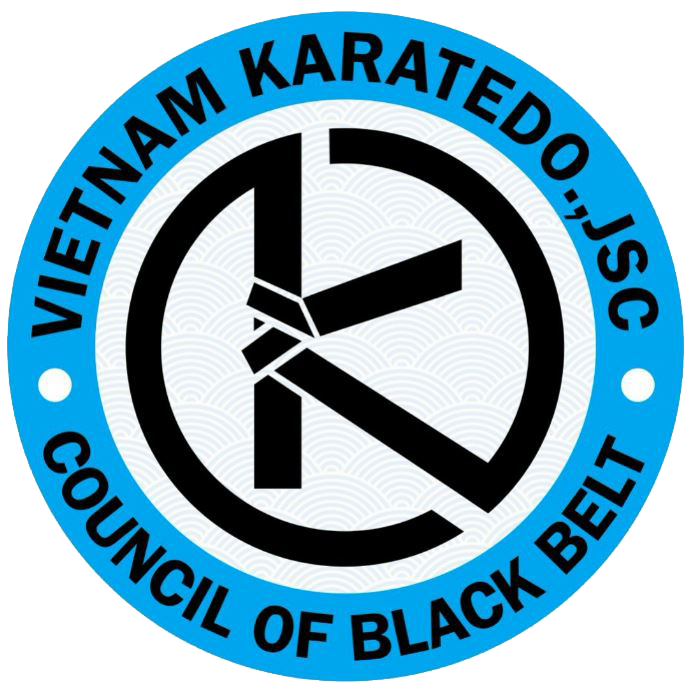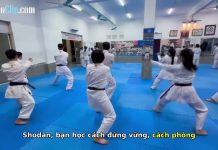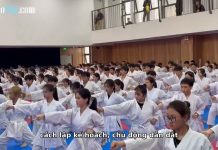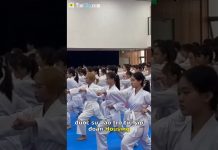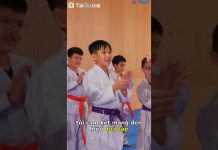Master the Suparinpei kata in Shito Ryu karate with our detailed tutorial. Learn step-by-step techniques, breathing patterns, and key applications to elevate your practice.
Suparinpei (also spelled Supparinpei) is one of the most advanced katas in the Shito Ryu karate style. As the final kata in the Goju Ryu lineage and one of the most complex in Shito Ryu, Suparinpei represents the number 108—a spiritually significant number in many Asian cultures. In the context of martial arts, it symbolizes the “108 defilements” in Buddhism, which the kata helps to overcome through discipline and mastery.
In this Suparinpei kata Shito Ryu tutorial, we break down each section of the kata, provide tips for proper execution, and highlight important bunkai (applications).
Background of Suparinpei Kata
Origin and Meaning
Suparinpei is rooted in Chinese White Crane and Southern Shaolin traditions and was introduced to Okinawan karate through masters like Kanryo Higaonna and later incorporated into the Shito Ryu system by Kenwa Mabuni. Its movements combine hard and soft techniques (go and ju), emphasizing rhythm, breathing, and internal control.
Why Learn Suparinpei?
-
Develops advanced coordination, timing, and power control
-
Tests your understanding of previous katas
-
Enhances internal breathing (ibuki) and kime (focus)
-
Ideal for black belt-level practitioners (4th dan and above)
Prerequisites Before Starting
Before learning Suparinpei kata, ensure you have mastered the following:
-
Intermediate katas such as Kururunfa, Seisan, and Sanseiru
-
Understanding of shime (tension testing) and mokuso (meditation)
-
Basic to advanced bunkai principles
-
Proper breathing control through ibuki breathing
Suparinpei Kata Shito Ryu Tutorial: Step-by-Step Breakdown
1. Opening Salutation (Rei and Yoi)
-
Begin in Heisoku Dachi.
-
Execute a strong bow (rei), followed by Yoi (ready stance) with focused breath.
-
Maintain alertness and readiness.
2. Initial Steps and Guarding Blocks
-
Step forward with left foot into Zenkutsu Dachi, executing Jodan Uke.
-
Rotate hips smoothly, shifting weight to control center-line.
-
Maintain eye level focus and shoulder relaxation.
3. Elbow Strikes and Circular Motions
-
Perform double Empi (elbow strikes) and simultaneous circular hand motions.
-
This section introduces fluidity while maintaining grounded stance.
Tip: Control your breathing—exhale during explosive movements and inhale between transitions.
4. Advanced Kicks and Sweeps
-
Suparinpei contains multiple high kicks, Mae Geri and Ushiro Geri, paired with blocks.
-
Practice kicks at medium speed first, then increase tempo.
Key Focus: Balance and stability during transition from kicks to stances.
5. Tension Movements (Shime Techniques)
-
Slow, deliberate tension movements showcase internal power.
-
Use ibuki breathing here to maximize control and kime.
Watch for: Over-tension. Muscles should be engaged but not locked.
6. Rapid Hand Strikes and Combos
-
Execute a flurry of Shuto Uchi (knife-hand) and Uraken (back-fist) strikes.
-
These combinations are critical for demonstrating speed and technique precision.
7. Directional Changes and Spins
-
Sharp directional changes test your coordination.
-
Incorporate spinning stances (Kaiten) with precision and awareness of spacing.
Breathing and Rhythm in Suparinpei
Correct breathing is essential in Suparinpei kata. Unlike some faster katas, Suparinpei alternates between:
-
Ibuki (hard breathing): For tension sequences
-
Nogare (soft breathing): For flowing movements
Pro Tip: Train your breathing separately before combining it with the kata. It will enhance endurance and power delivery.
Common Mistakes in Learning Suparinpei
-
Rushing the Kata: Suparinpei requires calm, calculated movement. Avoid hurrying through it.
-
Incorrect Breathing: Many karatekas forget to coordinate breath with motion.
-
Poor Transitions: Ensure smooth transitions between slow and fast techniques.
-
Lack of Understanding Bunkai: Memorizing the moves isn’t enough. Learn their self-defense application.
Suparinpei Bunkai: Real-World Applications
Every movement in Suparinpei has a practical application (bunkai). Examples include:
-
Wrist grabs and joint locks
-
Close-range strikes with elbows and knees
-
Throwing techniques hidden within circular movements
It’s recommended to train bunkai with a partner to internalize the purpose behind the motions.
Video Tutorial Recommendation
For visual learners, we suggest pairing this written tutorial with a Suparinpei kata Shito Ryu video tutorial by a certified instructor. Look for:
-
Clear demonstration from multiple angles
-
Slow-motion breakdowns
-
Emphasis on breathing and rhythm
Tips for Mastering Suparinpei Kata
-
Train consistently: Short, focused practice sessions daily are better than long, irregular ones.
-
Use a mirror or film yourself: This helps identify postural and timing issues.
-
Practice with intent: Know why you’re performing each movement.
-
Seek feedback: Train under a qualified Shito Ryu instructor when possible.
-
Condition your body: Strengthen your core and legs to support long stances and dynamic movements.
Conclusion
Learning the Suparinpei kata in Shito Ryu is a rewarding journey for dedicated martial artists. This advanced kata challenges your body, mind, and spirit, offering profound insights into the essence of traditional karate.
Whether you’re preparing for your next dan grading or exploring deeper levels of your kata journey, this Suparinpei kata Shito Ryu tutorial serves as your roadmap to excellence. Practice mindfully, breathe with intention, and embody the kata with every movement.
